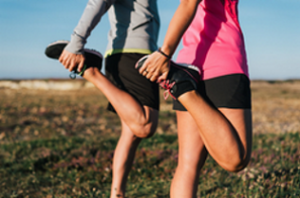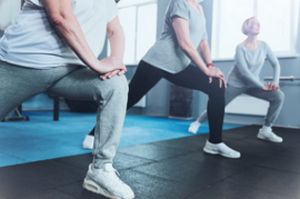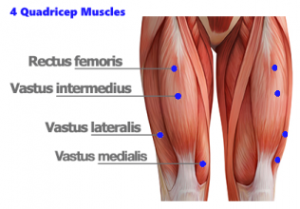Arthritis, injury to cartilage or tendons, torn hamstring, a Baker’s cyst, and blood clots all can be responsible for a stiff back knee, swelling, and even pain.
Posterior knee dysfunction is one of the most common complaints for all of us. It should be no surprise, really, because many of us take our knees for granted. We just assume they will always support us.
Of course, this is not an accurate picture.
All body parts, regardless of how strong they are, suffer from wear and tear. They also reach breaking points, as they can only endure so much negative action before they signal the brain with trouble.
Needless to say, serious medical conditions need to be treated through the proper channels.
Conversely, individuals with inflexible bodies, and who are simply unfit, should start a regimen of stretching to loosen back of knee.
Why Does It Hurt Behind My Knee When I Stretch
Given that you have no underlying medical issues, the main reason it hurts when you stretch is because the tendons need to be strengthened and lengthened.
Many people do not use all their muscles because they don’t do any type of physical activity.
Thus, when they try to innocently stretch out their legs, they find that it either hurts or is very stiff.
This is a normal reaction to muscles and tendons not being used and contracted, making them too short to straighten out.
When you randomly stretch out your legs, or any other part of your body, you are not stretching properly. The stretch should help the body, not create pain.
You’ve probably noticed that when you stretch in your sleep, you end up with cramps in the legs, which can be pretty agonizing.
 Consequently, stretching to loosen back of knee follows a proper routine which provides a safe approach to exercise.
Consequently, stretching to loosen back of knee follows a proper routine which provides a safe approach to exercise.
It’s also meant to be consistent, so that your tendons and ligaments are not contracting and expanding, caught in a vicious cycle which is unhealthy.
If they are comfortably expanded, they work the best, and are ready for most activities.
What is the Popliteus Muscle and Tendon?
Without getting too technical, this will be a brief explanation.
The Popliteus includes muscle, tendons, nerves, and ligaments. It is triangular shaped and connects the lower leg to the popliteus muscle in the corner of the knee.
- The key function of the popliteus is to stabilize the knee. It is involved in the movement of the knee when the foot is placed on the ground. As well, when the leg swings, the popliteus plays a role.
- Another function is knee flexion. This is used when locking and unlocking the knee to bear weight.
The popliteus muscle is a component of the deep posterior leg muscles. It is connected to other parts with very strong tendons. This area of the knee also includes other muscles, ligaments, and nerves.
When the popliteus muscle, popliteal tendons, or popliteal ligaments are damaged in some way, whether slightly or seriously, leg movement is restricted.
Even the simplest of tasks such as crossing one’s legs, bending the knees, walking or running become difficult to do, and may be painful when trying.
A few injuries that are common with the Popliteus are:
- Popliteus tendinitis – this is an inflammation of the tendons from hard repetition activities. Excessive running is an example. Because the foot is continually slammed onto the ground, the knee absorbs the full impact, and literally takes a beating.
- Popliteus muscle strain – catastrophic accidents, such as a critical fall or car accident usually cause this type of injury. In fact, it is more serious than strain implies. It is a tear, which greatly reduces mobility.
- Tear of the meniscus – this affects the back of the knee, making it less able to support and stabilize. In fact, in many cases, the knee just gives out without notice or warning.
- Anterior cruciate ligament damage – even the slightest injury will make it hard to move because the ACL helps to stabilize the knee.
Remember, that just because these injuries are considered common, does not mean that they can’t develop into something traumatic. As with all joints in the body, the knees should be looked after and injuries avoided.
5 Ways To Prevent Tight Knee Backs
Weight Loss
Even a few pounds will go a long way to relieve the stiffness in the back of the knee. Stretching will help to tone the body, while loosening up the tendons to make the knees more flexible.
Keep Fit In Case
If you play some form of sport regularly, you should already know about stretching, either for warm-ups prior to the game, or to keep in tip-top shape in order to perform better while playing.
But if you haven’t participated, and suddenly have the opportunity to play, you really want to limber up that body in advance.
Long before the date of the tournament, seek out a stretching plan of action, and stick to it. Not only will your body be ready when the big day comes, but you will be delighted at what great shape you are in.
Ask around because someone else in the game might let you train with them. This is a powerful motivator, plus, they probably have experience in stretching which can guide you on your way to stretching to loosen back of knee.
Build Strong Muscles
The more areas around the knee that you can build up, the better they can support the knee. For example, try strengthening the hamstrings and quadriceps with specific stretches that target those areas for flexibility and stability.
Avoid High Impact
If you have chronic pain or swelling, it may necessary to shun high impact sports and activities. It doesn’t even have to be a sport to be damaging.
It can be the way you do something in particular. Banging the feet on concrete floors, and other knee smashing activities are high impact.
They all force tremendous impact on the knee joints.
Use Pillow
When you sleep, use a pillow underneath your knee to support it. This helps with stretching to loosen back of knee, and improves your blood circulation. Also, by keeping the leg bent, and not straightened out, it gives whatever is wrong in the back of the knee a chance to recover.
How To Heal the Back Of Your Knee
One of the first things to do when treating a knee injury is to stop doing whatever activity caused the problem in the first place.
Then if the knee doesn’t require medical attention, stretching to loosen back of knee should be your next priority.
Stiffness of the knee can be avoided with some quick and easy stretches. These can be done anywhere, even waiting at the bus stop waiting to catch your bus or subway train to work.
Bringing your leg up to your buttocks and holding the pose will encourage the tendons and muscles to lengthen, thereby, reducing the stiffness and pain.
This pose also strengthens the knee area and the quads.
In addition to your stretching routine, you might consider adding shock absorbing insoles to your shoes. And when speaking about shoes, be sure to buy footwear that supports your feet and knees and that fit properly.
Arch supports aid in shifting pressure away from the knee, which in the long term protects the knee and its complex components.
Final Thoughts on Stretching to Loosen Back of Knee
Whether you wake up with a stiff back knee, or engage in physical activity that exerts harsh treatment of the lower limbs, stretching to loosen back of knee is your friend.
The exercises are not difficult to do and are convenient since they don’t need any special equipment or an particular place to do them.
To make it more fun, follow along with a video, or ask someone you know to meet on Zoom and do them together!

